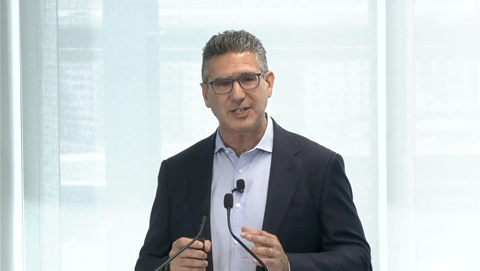The NSW Telco Authority manages the Public Safety Network (PSN), a radio network used by frontline emergency services, government agencies and essential services.
These service agencies use the PSN to communicate via radio handsets and other devices during emergencies like bushfires and floods.
Digital Nation Australia spoke with James Pickens, chief digital and technology officer at the NSW Telco Authority on how its partnerships with technology vendors help deliver critical radio communications to these first responders.
He said picking a technology partner is quite a rigorous process.
“There are schemes that vendors can be a part of which gets them access to the network that we would be distributing out. But then it becomes a lot more like a normal procurement team would do in that there are capabilities, whether they are feature sets that a product would provide,” he explained.
“If there are capabilities that come from how the services capabilities of a customer or of a vendor, that may fit our needs we would go through a scoring process to determine who was the best supplier for a particular project.”
Pickens discussed the importance of having long-term partners like Motorola Solutions.
“In terms of something as large as the PSN, there is certainly a lot of weight given to the fact we have an existing relationship with Motorola. We've worked with them for a long time now.
“In terms of going through the latest contract with them being in situ and having a lot of reliance on that network that already exists it certainly plays a big part in our decision-making as well,” he said.
Pickens said there is still a need for competition and a necessity for its customers when looking at its technology partners.
“But it still needs to be competitive it still needs to be able to provide the feature set that our customers need. It needs to have the inherent resilience and operability that we need as an organisation as well that we can rely on and obviously the security that goes with that,” he added.
The PSN covers close to 45 percent of the landmass of NSW Pickens said.
“Under the critical infrastructure expansion project that we're running, we're going to build that out to about 85 percent landmass or 99 percent of the population. It provides a very wide area radio communications network for emergency services and other agencies to communicate over,” he said.
“There is a capability for narrowband data usage, but it's predominantly earmarked for voice. So you as a user, if you are, for example, the ambulance, you will put your users into what's referred to as a ‘talk group’. Then you can effectively use a push-to-talk style radio communications device, which will talk amongst your fellow users, your teammates, your colleagues within that talk group.”




.png&h=140&w=231&c=1&s=0)




.png&w=100&c=1&s=0)

 Digital Leadership Day Federal
Digital Leadership Day Federal
 Government Innovation Showcase Federal
Government Innovation Showcase Federal
 Government Cyber Security Showcase Federal
Government Cyber Security Showcase Federal
 Digital NSW 2025 Showcase
Digital NSW 2025 Showcase












_(1).jpg&h=140&w=231&c=1&s=0)



